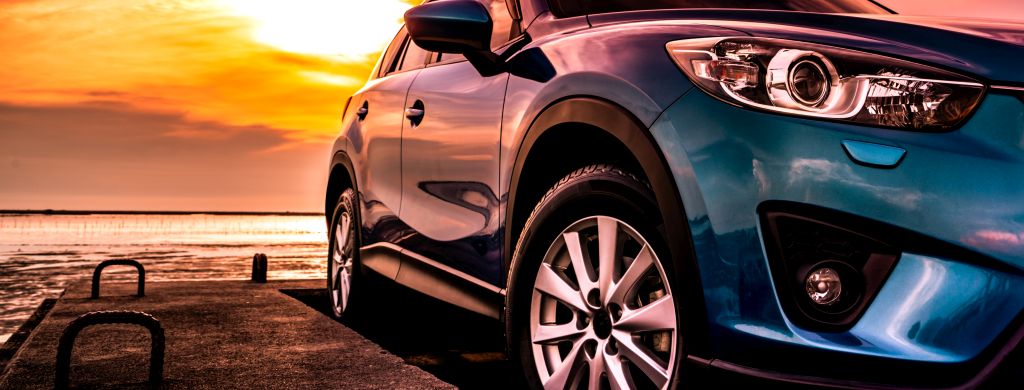Plug-in hybrids are not a new thing, but they are becoming increasingly popular. The sales of these cars has grown over the past two years. Plug-in is a specific type of a hybrid. Explore its pros and cons!
In this article you will find out:
- what are plug-in hybrids,
- what are the pros and cons of such cars,
- how you can charge a plug-in vehicle.
What is a plug-in hybrid and what makes it different from other hybrids?
Nowadays it’s hard to find a car manufacturer that does not offer a single hybrid model. In Europe this is largely due to the drive towards reducing Co2 consumption (high emissions cause pollution and entail financial penalties for car manufacturers). Such vehicles are a good alternative to traditional cars that run on petrol or diesel. They combine the beast features of electric cars (they are environment-friendly and rather cheap to refill) and traditional models with combustion engines (you don’t have to worry the battery will run low while you’re on the road).
A hybrid is a car powered by two engines – a combustion and an electric engine. Classic hybrids use regenerative braking and recover energy while the combustion engine is operating. The energy is needed to improve the performance rather than to cover large distances. The electric engine becomes a kind of support for the combustion engine.
This is the basic difference between a classic hybrid and a plug-in variant. The latter can not only be charged from an external power source (e.g. a socket), but they can also cover a specific distance (which may be up to a hundred kilometres) without using traditional fuel. An advantage of a car with two engines is that you can use them alternately – a combustion engine can be relied on in case of emergency, when electric energy is running low. Until then, you can use the electric engine, thus reducing fuel consumption.
PHEVs (Plug-in Hybrid Electric Vehicles) have a larger capacity battery, which maximises their range. When compared to classic hybrids, you will note the significant capacity difference – in the standard version it’s 1-2 kWh, while in a plug-in hybrid it’s 10-31 kWh.

Pros and cons of plug-in hybrids
Just like all innovations, also a plug-in hybrid has its pros and cons. The former include mainly low fuel consumption. The manufacturers claim that a hybrid with two engines has an average fuel consumption of 1-3 l/100 km. Especially on short distances, when you’re driving around the city relying only on the electric engine, without using the combustion engine. This is yet another advantage of these vehicles – if you rely on electricity, you reduce fuel consumption and if you drive economically, you can cut down the cost of fuel.
Due to a complex construction (two engines), these vehicles are heavier and less dynamic than EVs or combustion engine cars. They have lower load capacity (part of the luggage compartment may be needed for the battery) and smaller fuel tanks. They are also more expensive than combustion engine cars, and the need to recharge them regularly may be a nuisance for some of us.


Charging a plug-in hybrid
Charging plug-in hybrids look exactly the same as in the case of electric vehicles. You can use a public charging station or recharge your car at home – from an electric socket and a special cable, or from a Wallbox.
You might think the most convenient way to recharge a plug-in hybrid is to connect it to a socket at home – after all, it’s always at hand. You should remember, though, that this is a slow method – it might take up to 24 hours to fully charge the car battery.
If you want to recharge your car at home and make it fast, it’s best to buy a Wallbox. You can choose an option that uses the home grid (230 V) or a more advanced version which needs a three-phase installation (400 V – then you can charge your car battery with a capacity of 11-22 kW). You can plug your car in before you go to sleep and the wallbox will replenish the battery overnight.
Alternatively, you can use a public charging station. Most of them will charge your car with a power of 22 kW. There are also fast charging stations, which offer a power of 25-50 kW. And why so? The energy will go straight to your car battery (bypassing the inverter – a part which is necessary when you’re charging the car with alternating current), which speeds up the whole process.


Green Cell products for charging plug-in hybrids
If you’re thinking of buying a plug-in hybrid, remember that you’re going to need special equipment to charge it. In our online store you will find chargers compatible with plug-in hybrids: wallboxes (Wallbox GC EV PowerBox), mobile chargers (GC EV PowerCable) and charging cables (Green Cell GC EV Type 2). Explore Battery Empire and have your pick!
Veronica Jones
Related posts
Most viewed entries
- Polish Inventors Who Changed the World – Do You Know Them All?
- The Scariest Myths About Electronic Devices – Halloween 2024
- The history of bicycle – International Bicycle Day
- Electricity in a camper van on holiday – a conundrum easily solve
- Off-grid installation on a plot. Is it worth it?
- Charging your electric car at home without a wallbox

